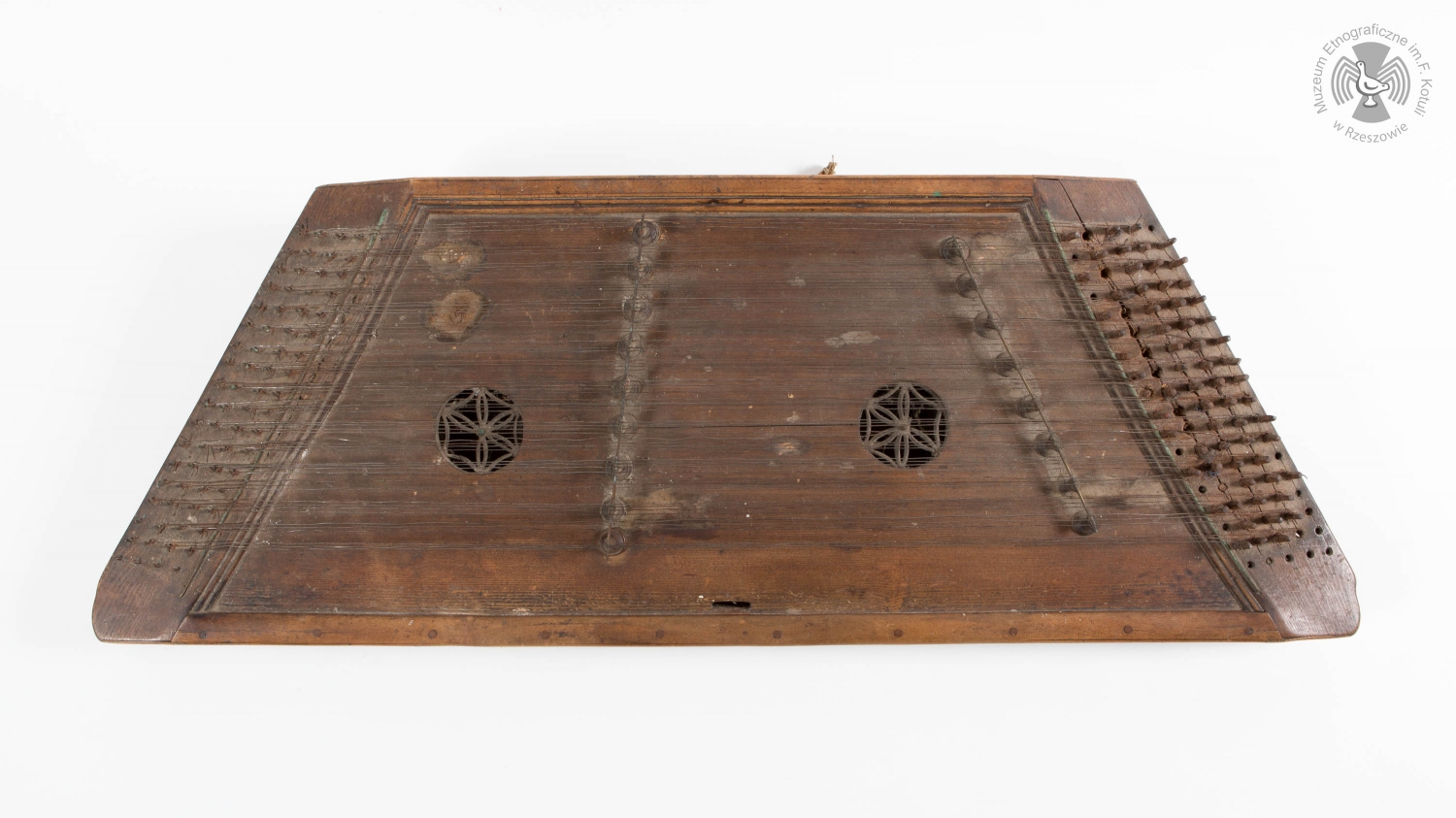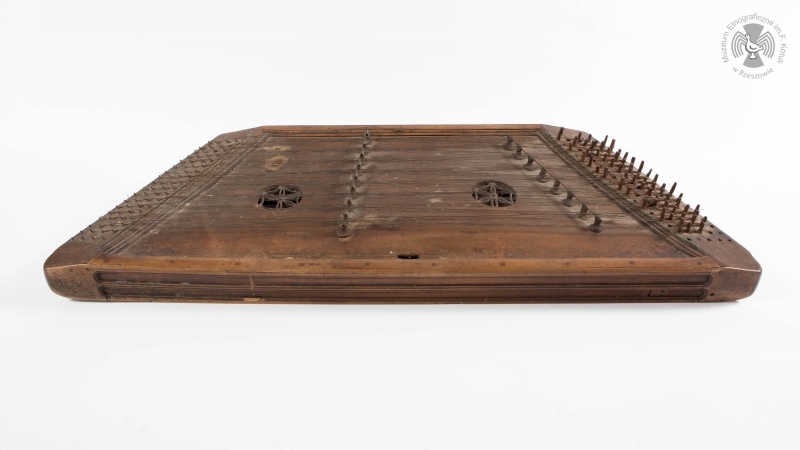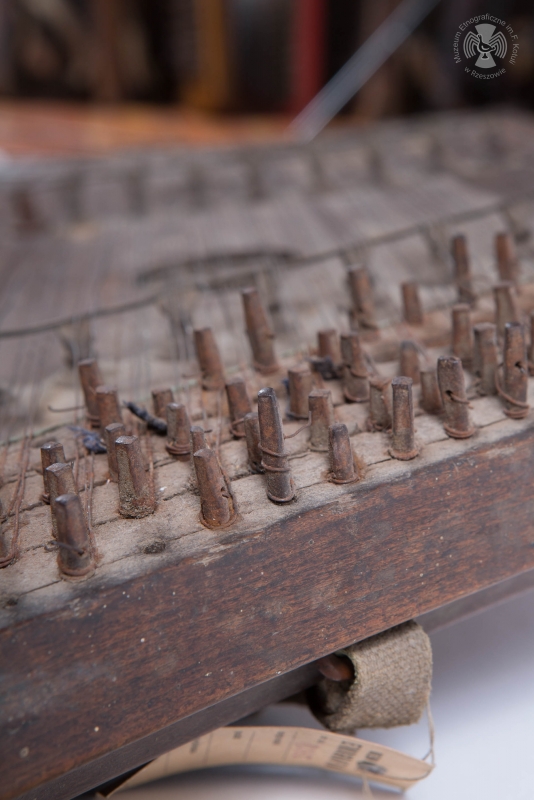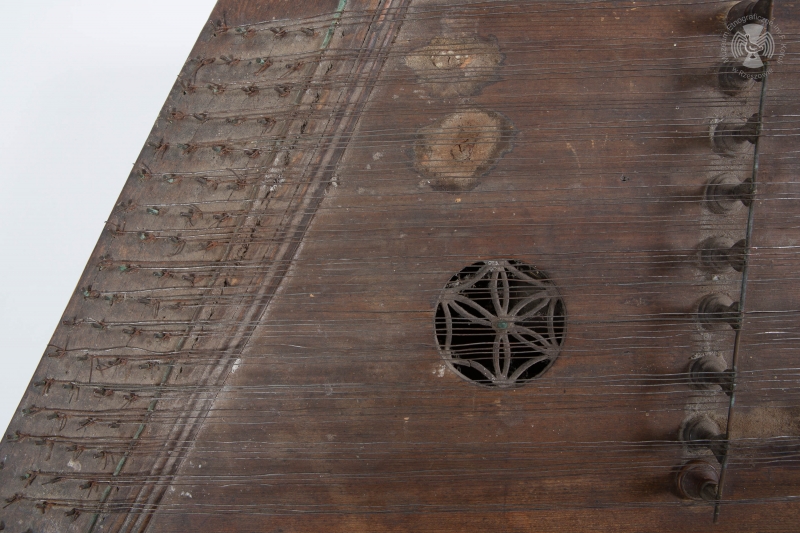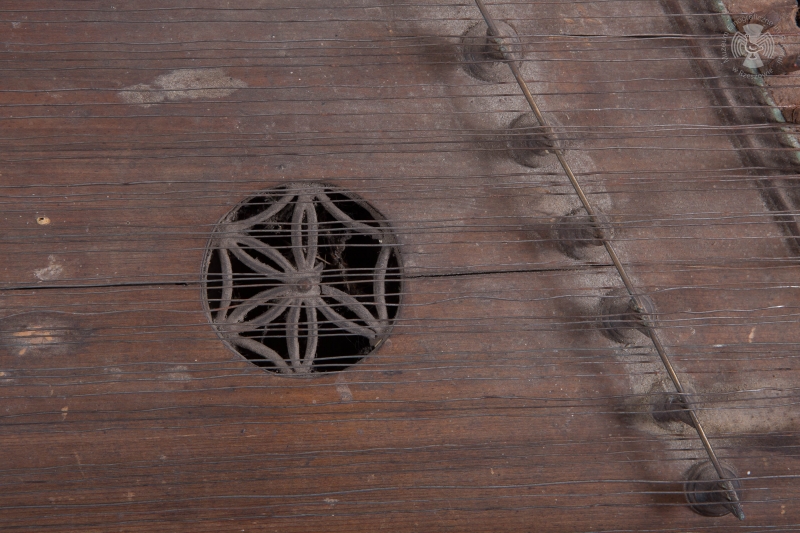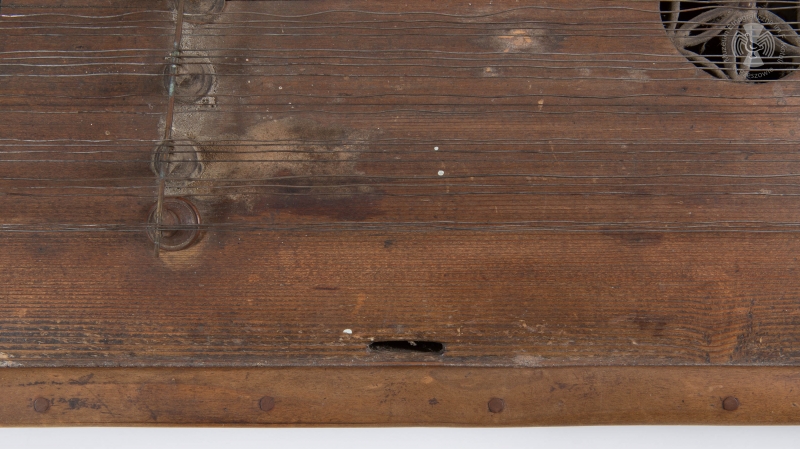dulcimer
Excerpt from the film Siła tradycji [The Power of Tradition], produced as part of the project "Muzyczny folklor Podkarpacia - badania terenowe" [The Musical Folklore of Subcarpathia - Field Studies], Franciszek Kotula Ethnographic Museum in Rzeszów, 2014
dulcimer
Classification: 3 Chordophones / 31 Simple chordophones or zithers / 314 Board zithers / 314.1 True board zithers / 314.12 With resonator / 314.122 With resonator box (box zither) / 314.122-4 True board zithers with resonator box (box zither) sounded by hammers or beatersMaker: Unknown
Date: before World War I
Village / Town: Grodzisk Górny area
Region: Subcarpathia
Country: Poland
Owner: Franciszek Kotula Ethnographic Museum in Rzeszów
Inventory number: MRE 8065
Description: body in a trapezoid shape with moulded sides; two round resonance holes on the top plate; an elongated hole (for money collection) in the bottom part of the soundboard; the top plate originally contained 19 string courses: 4 strings in each course, stretched between hitches and pegs (for tuning), supported by two rows of single bridges (9 and 8), each with a metal bar attached on top; melody strings stretched interchangeably with bass strings; melodic strings divided by bridges in a 2:3 ratio, due to which their left sections are pitched a fifth higher than their right sections; undivided bass strings; the strap fixed to both sides of the instrument allowed the musician to suspend the dulcimer on their neck while playing in a standing position; the instrument was played with mallets with round finger holes
Decoration: body and mallets stained brown
Measurements: 950 x 620 x 345 mm
Materials: wood, metal
Sound compass, tuning: variable, usually the lowest tone G – d, scale: from two (sometimes incomplete) to over four octaves
Performance practice: formerly an instrument of Jewish and Romany musicians, later folk musicians; it was played solo or in bands, particularly in the Vilnius area, Rzeszów area, and in Subcarpathia, where the dulcimer became the musical hallmark of the region after World War II; dulcimers from the eastern part of Lesser Poland are usually bigger and louder than those from the Vilnius area
Catalog card by: Jolanta Pękacz; Zbigniew J. Przerembski
<< Back

